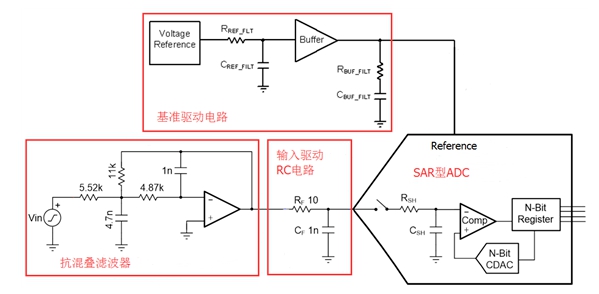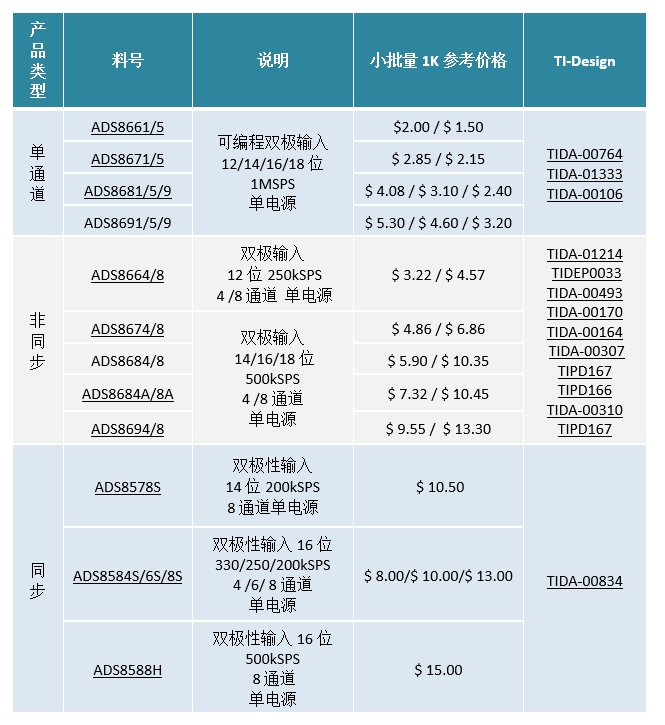“Due to its high resolution and sampling rate, SAR ADCs have been favored by many industrial and automotive customers. However, due to its special characteristics, the SAR ADC also puts forward many “special requirements” for the peripheral Circuits.
“
Due to its high resolution and sampling rate, SAR ADCs have been favored by many industrial and automotive customers. However, due to its special characteristics, the SAR ADC also puts forward many “special requirements” for the peripheral circuits.
The first is the need for anti-aliasing circuits. For example, when the sampling rate of the SAR ADC in the Circuit is fs, according to Shannon’s sampling law, the frequency of the input signal needs to be less than fs/2, and the signal whose frequency exceeds fs/2 will be “mixed” into the useful signal frequency band through the aliasing effect. , and cannot be distinguished. Therefore, in order to avoid the problem of aliasing, most SAR ADC circuits need to design a dedicated multi-order active filter at the front end to filter out signals with frequencies exceeding fs/2. (Note: The Σ-Δ ADC also needs an anti-aliasing filter in theory, but due to its oversampling characteristics and the out-of-band attenuation characteristics of the internal digital filter, the design requirements for the anti-aliasing filter are much lower, in most cases Next-order RC circuits can meet anti-aliasing needs.)
The second is the driving problem of analog input and reference input. Different from what is mentioned in college textbooks, most of the popular SAR ADCs on the market today no longer realize the successive approximation of the voltage through a voltage divider resistor network. Due to the popularity of the CMOS process, the charge is replaced by an internal capacitor network. Successive approximation, so that both the signal input end of the ADC and the reference input end are sampled by a capacitor, which is generally several pico-farads to dozens of pico-farads. Two new problems brought about by this are: 1. Can we fully fill the capacitor in the short time of sampling; 2. Whether this capacitor will pull down our signal transiently at the moment of sampling. (For the specific SAR ADC driver design, please refer to SLAA571A: Design Challenges and Improvement Techniques for SAR ADC Driver Circuit). Poor driver design will cause both the input signal and the reference signal to be pulled down transiently and cause sampling errors, as shown in the following figure:

Therefore, the standard SAR ADC drive circuit needs three parts: the reference and the drive circuit, the anti-aliasing filter, and the input drive circuit. The circuit structure is as follows:

In addition to the above two key issues, SAR ADC sampling circuits often need to be equipped with voltage references, analog switches, input amplifiers and DC bias circuits (AC signals cannot be directly sampled by a single-supply ADC), etc. Complex system designs often require additional Engineers shy away.
In response to this problem, TI has now developed a series of fully integrated SAR ADCs, which integrate high-impedance input programmable amplifiers, anti-aliasing filters, ADC drive circuits, analog switches and high-precision voltage references, etc. Provides programmable input ranges of ±10V/ ±5V/ ±2.5V in a single-supply environment. The highly integrated design makes this ADC more like a voltage collector, which greatly simplifies the design of the sampling circuit. At the same time, TI provides a very competitive price for many industrial customers to choose. Its structural block diagram is as follows:

This fully integrated ADC greatly simplifies circuit design while optimizing cost. For this type of fully integrated ADC, TI provides a variety of models, covering different resolutions, different channels, synchronous/asynchronous and other devices. The following table lists the full range of highly integrated SAR ADCs, as well as the corresponding materials and reference design TI-Design, engineers are welcome to click to view.

Note: Most TI devices will have reference designs, which we call TI-Design. Each TI-Design includes reference manuals, schematic diagrams, PCBs, software codes, test results, and BOM tables. Users can visit TI’s official website. free download.
The Links: 1MBI600U4-120 G185XW01-V0